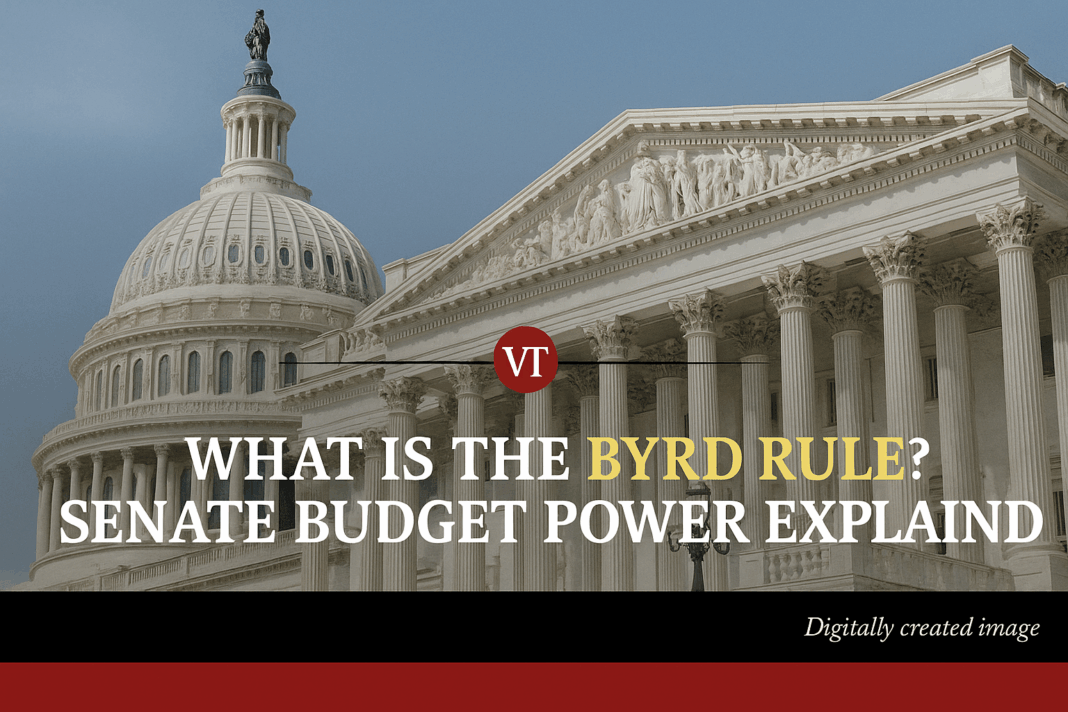In the labyrinthine world of U.S. Senate procedure, few rules wield as much quiet influence over legislation as the Byrd Rule. Named after the late Senator Robert C. Byrd (D-W.Va.), this arcane but potent rule governs what can—and cannot—be included in budget reconciliation bills, a legislative fast-track that allows certain fiscal measures to bypass the Senate filibuster and pass with a simple majority.
Origins and Purpose
The Byrd Rule was first adopted in 1985 and later codified in Section 313 of the Congressional Budget Act of 1974. Its primary aim is to prevent “extraneous” provisions—those unrelated to budgetary changes—from being smuggled into reconciliation bills, which are intended solely for adjusting federal spending, revenues, and the debt limit.
According to the Congressional Research Service, the rule was a response to growing concerns that reconciliation was being misused to pass sweeping policy changes under the guise of budgetary legislation. In 1990, the rule was made permanent.
How It Works
Under the Byrd Rule, any senator may raise a “point of order” against a provision in a reconciliation bill that they believe is extraneous. If the Senate Parliamentarian agrees, the provision is struck unless 60 senators vote to waive the rule—a high bar in a chamber often divided along partisan lines.
The rule defines six tests for extraneousness, including:
- No budgetary effect
- Merely incidental budgetary impact relative to policy goals
- Violations of committee jurisdiction
- Increases to the deficit beyond the budget window
- Changes to Social Security
- Noncompliance with reconciliation instructions
These criteria are interpreted by the Senate Parliamentarian, a nonpartisan official who advises the presiding officer on procedural matters. The current Parliamentarian, Elizabeth MacDonough, has played a pivotal role in recent legislative battles, including the June 2025 debate over President Trump’s “One Big Beautiful Bill” (OBBBA).
You might hear the term “Byrd Bath”—an informal phrase describing the pre-vote review process in which bill provisions are assessed for Byrd Rule compliance.
Recent Applications and Controversies
In June 2025, MacDonough ruled that several provisions in the OBBBA—including Medicaid cuts, SNAP benefit changes, and restrictions on gender-affirming care—violated the Byrd Rule and must be removed. These rulings significantly altered the bill’s fiscal architecture and forced Republican leaders to seek alternative savings sources.
According to a Forbes analysis, the Congressional Budget Office projected that the bill’s tax provisions would increase the federal deficit beyond the 10-year budget window ending in 2034—raising further Byrd Rule concerns over long-term fiscal impacts.
Critics, including Rep. Greg Steube (R-Fla.), have called for the Parliamentarian to be overruled, arguing that unelected officials should not have veto power over legislation supported by millions of voters. However, defenders of the rule contend it protects the reconciliation process from being exploited for sweeping non-budgetary reforms.
Procedural Power and Political Implications
The Byrd Rule exemplifies how Senate procedure can shape policy outcomes as much as political ideology. It empowers a single official—the Parliamentarian—to act as gatekeeper for what qualifies as budgetary legislation. While the presiding officer of the Senate can technically overrule the Parliamentarian, this hasn’t occurred since 1975 and is considered politically risky.
According to the Congressional Research Service, the Byrd Rule has been invoked in 17 of the 21 reconciliation bills considered since 1985, with over 60 points of order sustained. Its influence is not just procedural but profoundly political, often determining the fate of major legislative initiatives.
Conclusion
In an era of hyper-partisan gridlock, the Byrd Rule remains a powerful procedural tool that shapes the contours of federal legislation. Whether viewed as a safeguard against legislative abuse or an obstacle to sweeping reform, its role in the Senate’s reconciliation process is indispensable—and increasingly scrutinized.
For further reading, see the full report from the Congressional Research Service and the latest Forbes analysis.
A global media for the latest news, entertainment, music fashion, and more.















